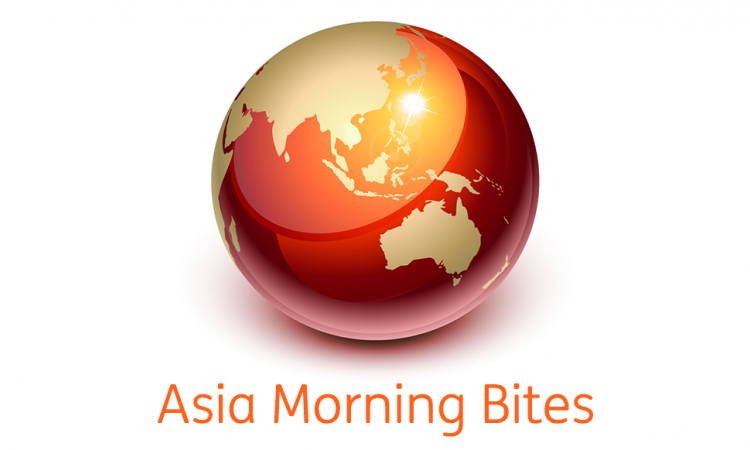
Global Markets: A strong surge in currencies against the dollar was the main story on Monday, and this was especially the case for some of the Asian currencies. The THB gained 1.6% on the day, dropping to 34.39 and probably helped by the imposition of a new PM to fill the political vacuum. But there were also strong performances from the KRW, MYR and PHP, which all gained more than a per cent on the day. The IDR was also up just under 0.9%. USDCNY has dropped to 7.1395. Among the G-7, EURUSD rose to 1.1084, the AUD has pushed up to 0.6734 and Cable is just below 1.30. USDJPY has given 145 a look but has pulled back to 146.84 now. The USD’s weakness may be a prelude to this week’s Jackson Hole speech by Fed chair Powell. It may also reflect the sense that the US is out of imminent recession danger and so is back in the middle of the “dollar smile”, where it tends to do more poorly, and there may also be a loss of safe-haven appeal for the dollar as the prospects for a cease-fire in Gaza grow.
Treasury yields don’t seem to be the driver for any of this, however. 2Y US Treasury yields rose 1.6 basis points, and 10Y yields fell just 1.1bp to 3.871% yesterday. US equities had a decent day. The S&P 500 rose 0.97%, and the NASDAQ gained 1.39%. Chinese stocks also rose. The Hang Seng gained 0.8% and the CSI 300 rose 0.8%.
G-7 Macro: There was no macro data of note from the G-7 yesterday. Today is also very quiet apart from Canadian CPI data for July.
Australia: We get the minutes from the August Reserve Bank of Australia meeting later today, and we could see how close the RBA came to hiking at that meeting, where they left rates on hold. Australia is not out of the woods with respect to inflation, and recent strong labour data mean that while we have now removed hikes from our forecast, they remain a tail risk and we don’t see any prospect of rate cuts this year.
China: China’s 1-year and 5-year loan prime rates will be announced this morning. No change is expected this month after the rate cuts in July. Our current forecast is looking for one further rate cut in 2024 and two more cuts in 2025, but recent developments increase the odds of seeing multiple cuts before year-end. We could soon see further reductions to the required reserve ratio as well, but expect those cuts to bring diminishing returns as right now, it appears to be an issue of lacklustre borrowing demand rather than limited funds for banks to lend. Given the recent adjustment to the PBOC’s monetary policy framework, future rate cuts will likely start from the 7-day reverse repo rate, similar to what we saw in July, potentially as early as September.
Taiwan: Export orders data will be published in the afternoon. Markets are looking for a very small pullback in YoY growth from 3.1% to 2.7%, and we are looking for a slightly larger pullback to show a dip back into contraction on the month. Taiwan’s exports have been quite unbalanced as of late so orders data could give a sense if there is any further shift.
South Korea: The composite consumer sentiment index fell to 100.8 in August (vs 103.6 in July). The headline index stayed above the neutral level of 100 for a third month, but details suggest a cloudy outlook for private consumption. All six sub-components declined, with household income and spending showing the largest declines. Inflation expectations, which are closely monitored by the Bank of Korea, remained at 2.9 per cent for the second month in a row. With inflation and expectations broadly trending lower, in line with the Bank of Korea’s outlook, the policy focus of the Bank of Korea may shift from inflation to financial stability and growth. The Bank of Korea is expected to keep its policy rates unchanged at 3.5% this Thursday, but the overall policy stance among board members has likely shifted towards easing.
